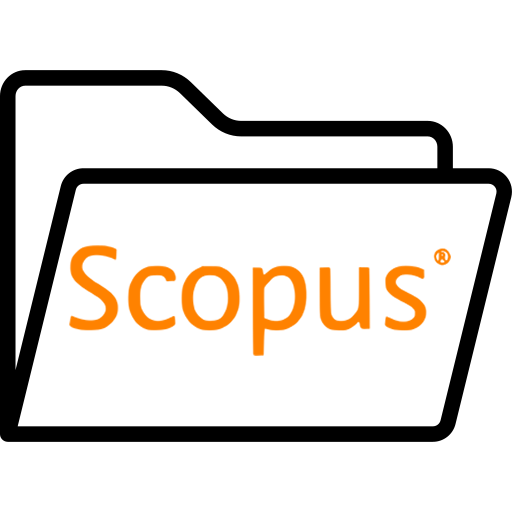İstanbul Gedik Üniversitesi Kurumsal Akademik Arşivi
DSpace@Gedik, İstanbul Gedik Üniversitesi tarafından doğrudan ve dolaylı olarak yayınlanan; kitap, makale, tez, bildiri, rapor, araştırma verisi gibi tüm akademik kaynakları uluslararası standartlarda dijital ortamda depolar, Üniversitenin akademik performansını izlemeye aracılık eder, kaynakları uzun süreli saklar ve etkisini artırmak için telif haklarına uygun olarak Açık Erişime sunar.

Güncel Gönderiler
Developing a novel hybrid model based on GRU deep neural network and whale optimization algorithm for precise forecasting of river's streamflow
(Nature Research, 2025) Gharehbaghi, Amin; Ghasemlounia, Redvan; Ahmadi, Farshad; Mirabbassi, Rasoul; Torabi Haghighi, Ali
Streamflow contemplates a fundamental criterion to evaluate the impact of human activities and climate changes on the hydrological cycle. In this study, a novel innovative deep neural network (DNN) structure by integrating a double Gated Recurrent Units (GRU) neural network model with a multiplication layer and meta-heuristic whale optimization algorithm (WOA) (i.e., hybrid 2GRU×–WOA model) is developed to improve the prediction accuracy and performance of mean monthly Chehel-Chai River’s streamflow (CCRSFm) in Iran. The Pearson’s correlation coefficient (PCC) and Cosine Amplitude Sensitivity (CAS) as feature (input) selection process determine the only precipitation (Pm) as the most effective input variable among a list of on-site potential climate time series parameters recorded in the study area. Thanks to a well-proportioned layer network structural framework in the suggested hybrid 2GRU×–WOA model, it leads to an appropriate total learnable parameter (TLP) compared to standard individual GRU and Bi-GRU as the benchmark models developed in the comparable meta-parameters. This hybrid model under the optimal meant meta-parameters tuned i.e., coupling a state activation functions (SAF) of tanh-softsign, dropout rate (P-rate) of 0.5, numbers of hidden neurons (NHN) of 70, outperforms with an R2 of 0.79, NSE of 0.76, MAE of 0.21 (m3/s), MBE of -0.11(m3/s), and RMSE of 0.36 (m3/s). Hybridizing the 2GRU× model with WOA algorithm causes to increase in the value of R2 by 6.8% and reduce in the value of RMSE by 20.4%. Comparatively, standard individual GRU and Bi-GRU models result in an R2 of 0.59 and 0.66, NSE of 0.55 and 0.6, MAE of 0.91 and 0.53 (m3/s), MBE of 0.047 and − 0.06 (m3/s), RMSE of 1.29 and 0.83 (m3/s), respectively.
High-speed kinetic energy storage system development and ANSYS analysis of hybrid multi-layered rotor structure
(Multidisciplinary Digital Publishing Institute (MDPI), 2025) Yangöz, Cenk; Erhan, Koray
Flywheel energy storage systems (FESSs) can reach much higher speeds with the development of technology. This is possible with the development of composite materials. In this context, a study is being carried out to increase the performance of the FESS, which is especially used in leading fields, such as electric power grids, the military, aviation, space and automotive. In this study, a flywheel design and analysis with a hybrid (multi-layered) rotor structure are carried out for situations, where the cost and weight are desired to be kept low despite high-speed requirements. The performance values of solid steel, solid titanium, and solid carbon composite flywheels are compared with flywheels made of different thicknesses of carbon composite on steel and different thicknesses of carbon composite materials on titanium. This study reveals that wrapping carbon composite material around metal in varying thicknesses led to an increase of approximately 10-46% in the maximum rotational velocity of the flywheel. Consequently, despite a 33-42% reduction in system mass and constant system volume, the stored energy was enhanced by 10-23%. It was determined that the energy density of the carbon-layered FESS increased by 100% for the steel core and by 65% for the titanium core.
Relationship between personality traits and professional readiness of nursing students: a descriptive study
(Association of Executive Nurses, 2025) Çatak, Tuba; Coşkun, Filiz; Gündüz Hoşgör, Derya
Aim: This study aimed to examine the relationship between the personality traits of senior nursing students and their perceptions of professional readiness in the distance education process. Method: This descriptive and correlational study was conducted with 315 senior nursing students, who were reached using the snowball sampling method between March 28 and July 30, 2023. Data were collected online using the Descriptive Information Form, the Nursing Professional Readiness Perception Scale and the Ten-Item Personality Inventory. Descriptive statistical methods (Percentage, Mean, Standard Deviation), Independent samples t-test, One-Way Analysis of Variance, and Pearson Correlation analyses were used for data analysis. Results: It was determined that 56.8% of the students participating in the study reported that the courses completed through distance education negatively affected their professional readiness, and 65.7% were not willing to choose the nursing profession again. It was found that the students' perceptions of professional readiness were at a high level, and when their personality traits were evaluated, the highest average score was obtained from the openness to experience subscale. In addition, statistically significant relationships were found between the Ten-Item Personality Inventory and the sub-dimension scores of the Nursing Professional Readiness Perception Scale (p<0.05). Conclusion: It was determined that senior nursing students' perceptions of professional readiness in the distance education process were at a high level and there was a significant relationship between their perceptions of professional readiness and personality traits.
Emergency action plan for Haditha dam failure scenario, Al-Anbar, Iraq
(Future Publishing LLC, 2025) Hameed, Yasameen; Ghasemlounia, Redvan; Mohammed, Thamer Ahmed; Al-Ansi, Abdulwahab
Dams are essential structures that regulate and manage water for human activities such as irrigation, power generation, flood control, and water supply. However, building and operating dams involve inherent risks that can lead to catastrophic consequences in case of failure, such failures can threaten the environment and populations downstream. Haditha Dam, Al-Anbar Governate, Iraq has been chosen as a case study due to its unique geological conditions (existence of limestone formations prone to karstification) and susceptibility to terrorist attacks. In this research, the risk factor for Haditha Dam is categorized as extremely high risk, with a Total Risk Factor (TRF) of 36. An emergency action plan that includes three possible failure scenarios has been proposed. Based on the flood maps, there is an urgent need for evacuation planning and the designation of safe and unsafe zones in the cities downstream of Haditha Dam to mitigate the consequences of a potential failure of the Dam. This plan aims to address immediate flood inundation, minimize loss of life, and manage the damage that could occur to infrastructure. As part of the emergency response strategy, an evacuation program has been proposed to protect lives and reduce the impact on affected populations.
Adli arama ve önleme araması arasındaki farklılıkların hukuksal boyutları
(İstanbul Gedik Üniversitesi, Lisansüstü Eğitim Enstitüsü, 2024) Özel, Emrullah; Türay, Aras
Koruma tedbiri olarak yapılan aramalar, genellikle kişilerin güvenliğini sağlama, tehlikeli durumları önceden engelleme veya önleme amacı taşır. Bu tür aramalar genellikle hukuki bir sürecin bir parçası olarak uygulanır ve mahkeme kararı veya yasa tarafından belirlenen belirli koşullar altında gerçekleştirilir. Hukukumuzda arama iki şekilde gerçekleşmektedir. Bunlardan ilki adli aramadır. Adli aramalar, bir suçun soruşturulması veya suçla ilgili delillerin toplanması amacıyla yürütülen resmi araştırmalardır. Bu tür aramalar genellikle mahkeme kararıyla gerçekleştirilir ve hukuki süreçlere uygun olarak yürütülür. Adli aramanın bazı sebepleri vardır. Bu sebepler; suç delillerini toplama, şüpheli kişilerin incelenmesi, suçlu yakalama ve gözaltına alma, mağdurun güvenliğini sağlama, gizli delillerin tespit edilmesi ve hukuki süreçler için hakimin karar verme süreçlerini destekleme olarak sıralanabilir. Önleme araması ise daha çok acil durumlar veya potansiyel tehlikelerin önceden belirlenmesi ve engellenmesi amacıyla yapılır. Bu tür aramalar, genellikle hızlı ve etkili bir müdahale sağlamak için güvenlik amacıyla yürütülür. Adli aramada olduğu gibi önleme aramasının icrası içinde bazı sebepleri vardır. Bu sebepler; güvenlik kontrolü, özel güvenlik durumları, suç işlemesini önlemek ve kamu düzenini sağlamak olarak ifade edilebilir. Hukuk sistemimizde her iki arama türü için bazı farklılıklar vardır. Bu çalışmada da adli arama ve önleme araması arasında bulunan farklılıkların ortaya çıkartılması ve Yargıtay'ın içtihatlar doğrultusunda farklılıkları nasıl değerlendirdiği ele alınmış ve değerlendirilmiştir.



















